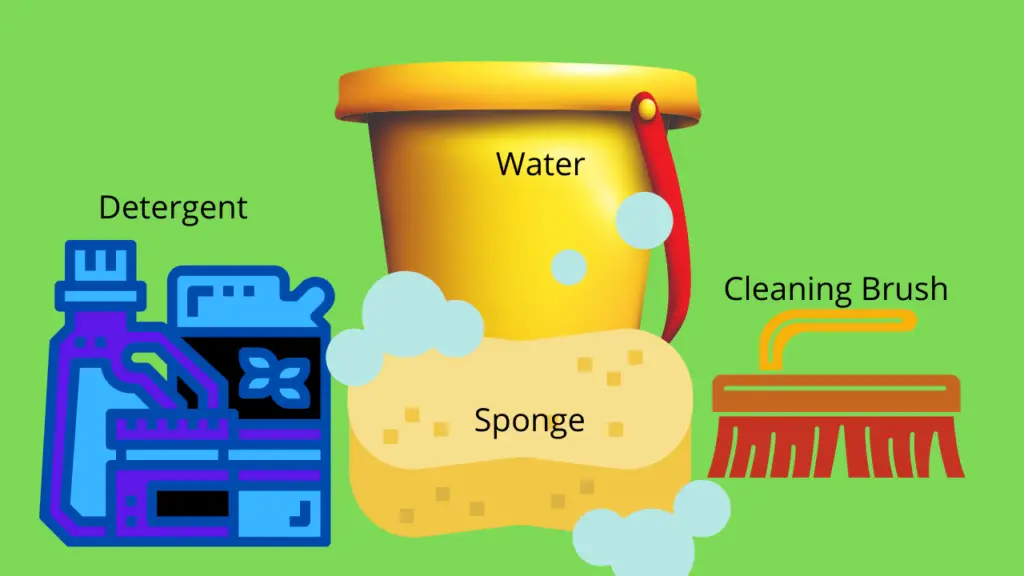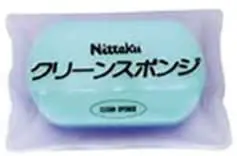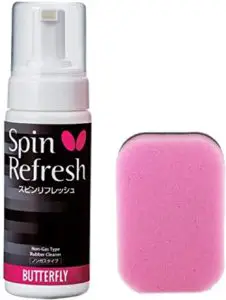For many table tennis enthusiasts, a ping pong paddle is not just a tool but an extension of themselves when they play. It reflects their style, tactics, and passion for the game. As with any cherished possession, maintaining its condition is paramount. A clean ping pong paddle is not just about aesthetics; it plays a pivotal role in the game itself.
When we dive deep into the realm of table tennis, we’ll realize that the subtle nuances, like the spin of the ball or the grip of the paddle, can make a world of difference in the game’s outcome. A clean paddle ensures that each stroke you make, whether it’s a smash or a gentle push, is precise and effective. It ensures that the ball’s contact with the paddle yields the desired effect.
In essence, a well-maintained paddle is not just a preference; it’s a necessity. It ensures optimal performance, helping you play your best game every time you step to the table. Let’s explore the intricacies of cleaning a ping pong paddle and why it could be your secret weapon to mastering those winning strokes.
The Anatomy of a Ping Pong Paddle
Dive into the world of table tennis, and you’ll quickly discover that the ping pong paddle, sometimes referred to as a table tennis racket, is a marvel of engineering. While it might look simple to the untrained eye, it’s a composite of various materials and design elements that come together to offer players a unique playing experience. But why is it essential to acquaint ourselves with its structure? The answer lies in its maintenance. To effectively clean and care for a paddle, understanding its anatomy is crucial.
1. The Blade: Central to the paddle, the blade is typically made of layers of wood, sometimes combined with other materials like carbon fiber. It forms the paddle’s primary body and influences the speed and control of the game.
2. The Rubber: Attached to the blade’s surface, the rubber sheet is the paddle’s contact point with the ball. It can be pimpled or smooth, determining spin, speed, and trajectory of the ball. The rubber’s condition directly affects gameplay, making it essential to clean and maintain.
3. The Sponge: Found between the rubber and the blade, the sponge plays a role in dictating the speed and spin of the ball. Its thickness can vary, impacting the overall performance of the paddle.
4. The Handle: Extending from the blade, the handle is what players grip. It comes in various shapes and sizes to cater to different grip styles. A clean handle ensures a comfortable and non-slip grip during intense games.
5. Edge Tape: Wrapped around the paddle’s perimeter, this protective tape safeguards the rubber and blade from damage during play. It’s a shield against dings, wear, and tear.
In understanding the distinct parts of a ping pong paddle, we equip ourselves with the knowledge to clean each component with care and precision. Recognizing that each part has its unique materials and significance means we can ensure that cleaning methods used won’t damage the paddle, and instead, will extend its lifespan. So, before you immerse yourself in the cleaning process, take a moment to familiarize yourself with your paddle’s anatomy – it’s the first step towards effective care and maintenance.
Understanding the Impact of Dirt and Dust
Table tennis, a game of precision and strategy, requires not only skills but also impeccable equipment. A primary component of this gear is the ping pong paddle. While it might seem that a thin layer of dust or the occasional smudge on its surface wouldn’t matter, the reality is quite the opposite. Even the minutest particles can significantly impact the game. Let’s delve into the intricacies of how and why.
The Subtle Sabotage by Grime, Oil, and Dust:
Our hands naturally secrete oils, and when combined with accumulated dirt and dust, a filmy layer forms on the paddle’s surface. This seemingly inconspicuous layer can drastically reduce the rubber’s tackiness. For a game where spin plays an integral role, a reduction in this grip can mean the difference between a winning top-spin shot and an uncontrolled hit that misses the table.
Furthermore, particles of dust can introduce unpredictable spins, making the ball’s trajectory unreliable. Your calculated strokes might not produce the desired effects, leaving you baffled and at a disadvantage.
The Long-Term Fallout:
The occasional lapse in paddle cleanliness might seem harmless, but frequent neglect can compound into a larger problem. The accumulated grime can embed deeper into the rubber’s pores over time, making it progressively less responsive. Not only does this dampen the rubber’s efficacy, but it can also lead to premature degradation, meaning you might find yourself investing in a new paddle sooner than expected.
Moreover, a neglected paddle can become a breeding ground for bacteria, thanks to the combination of sweat, oils, and environmental dirt. Not only is this unhygienic, but it also poses potential health risks every time you grip the handle.
In essence, the cleanliness of a ping pong paddle isn’t just about appearance or short-term game performance. It’s about preserving the paddle’s integrity, ensuring it remains an effective partner in your table tennis journey, and maintaining a healthy, hygienic playing environment. It’s a small effort that holds significant implications for both your game and the longevity of your equipment.
Why Cleaning Your Paddle Will Make A difference
Have you ever questioned your mind watching why a brand new ping pong paddle had better performance than an old one? Why does that happen? It happens because of dust and sticky sweat that comes from your hand during the game.
When the ball hit the rubber, it got stuck for a quick moment, and it cannot provide the correct spin and speed for the sticky dust. The new rubber has a fresh and smooth gripping capability. The new rubber generates a perfect shot and helps to place it in the right place.
For a long time, use old paddles makes the performance downward. It can not give you the best result if your paddle’s rubber is full of dirt. So if you want to get the best output on your games, you must clean your paddle regularly after each match.
Here is some outstanding solution to clean your ping pong paddle that will bring back your game to life.
How To Clean A Ping Pong Paddle: What You’ll Need and Instructions
Water and Sponge
If you do not want to spend money on cleaning your paddle, then water and a kitchen sponge can help you clean your paddle. But there is always some risk in this process. Because the water is such a liquid that can lose rubber’s tackiness.
In this process, take your kitchen sponge and put some water on it and make sure it holds the least water on it. Then gently wipe the rubber surface with the sponge until all the dirt removed. Continue the process cautiously.
Most importantly, watch the rubber surface properly and wipe out the sweat from the surface because the most dangerous thing is sweat that pulldown your shot speed and spins during the game.
After finishing the process air dry your paddle. Never let it dry in the sun. Otherwise, the stickiness of the rubber will go away. Instead of using a kitchen sponge, you should buy a sponge that is specially produced for cleaning the ping pong paddle.
This sponge will clean your paddle accurately without any damage to the rubber surface. But it is okay with the regular sponge if you have no intention to spend money on that.
Rubber Cleaning Solutions
Rubber cleaning solution does a better job than typical water and sponge. Different types of rubber solutions out there from different brands that clean out the grime from the rubber surface. It can do its job better than water, and it is risk-free.
Though some user has reported that it can deteriorate rubber quick, if you follow the instruction of using that, you will get the gentle way to get a better result.
Why are we talking about the product? The primary reason is safety. You never want to waste your favorite paddle. So you need to take proper care of that. The main benefit of using the rubber solution prevents aging and oxidation of your paddle rubber.
Toothbrush Process
Using a toothbrush to clean a paddle can be the most effective way to remove tackiness from the surface, mainly from the edges. It is tough for a sponge to reach the corners of the rubber to remove the tacky pimples whereas your toothbrush can do your job generously for that case.
If you use your used brush that is quite usual rather than a new one, even a new one has a hard cord that can damage if you do not pay proper attention. You should let it dry after finishing the process.
What to avoid when cleaning your paddle?
Using alcohol and detergent in cleaning a ping pong paddle is the worst idea though some people do that. But as the ping pong expert, we do not suggest that. If you clean your paddle with any of that product, it may look shiny, but it will make the rubber brittle.
It will shorten the life of the rubber that needs to be replaced soon, which you never expect from the cleaning. One more thing we want to add to the list is bleach. It is also as dangerous as the other two. It will cause the same effect. So better, not to use any of them.
Some people may think about using the abrasive scrubber to clean their paddles. Never use that if you want to use your paddle further. It will destroy the rubber instantly if you ever use a scrubber in the cleaning paddle. Do not make that mistake ever.
What to use to clean a ping pong paddle?
- Water
- Sponge
- Clean Cloth
- Rubber Cleaning Solutions
- Tooth Brush
Can you wash ping pong racket?
While it is generally not recommended to wash a ping pong racket under running water, you can clean it using a damp sponge or cloth.
Using water can damage the rubber and wood materials of the racket, and can also affect its performance during gameplay. Additionally, water can seep into the handle and cause it to swell or loosen over time.
Instead of washing the racket, it is better to use a damp sponge or cloth with a mild cleaning solution made of water and dish soap to wipe down the surface of the racket. Be sure to wipe both sides of the paddle and dry it thoroughly before storing it in a cool and dry place.
If you have persistent dirt or grime on your paddle, it may be best to consult with a professional paddle cleaner or replace the rubber if it is worn out.
can you clean table tennis rubber with water?
Yes, you can clean table tennis rubber with water, but it is important to use a damp cloth or sponge instead of soaking the rubber in water.
To clean the rubber, dampen a cloth or sponge with clean water and gently wipe the rubber surface. This will help to remove any dirt, dust, or debris that may be stuck to the rubber.
Avoid using hot water or cleaning agents, as these can damage the rubber and affect its performance. Also, do not scrub the rubber too hard, as this can cause damage and affect its spin or speed during gameplay.
After cleaning the rubber, dry it thoroughly with a clean, dry cloth before using it again. This will help to prevent water damage and prolong the lifespan of your table tennis rubber.
How to make ping pong paddle sticky
Making a ping pong paddle sticky is a common technique used by players to improve their grip on the ball and increase spin during gameplay. Here are a few ways to make your ping pong paddle sticky:
- Clean the rubber: Use a mild cleaning solution to remove any dirt, debris, or oil buildup from the rubber surface of the paddle. A clean rubber surface is essential for increasing its tackiness.
- Apply a sticky sheet: A sticky sheet is a thin, adhesive film that can be applied to the rubber surface of the paddle to increase its grip on the ball. You can purchase sticky sheets online or at your local sports store, and they are easy to apply to the rubber surface of your paddle.
- Apply water: Applying water to the rubber surface of the paddle can help to increase its tackiness temporarily. However, it is important to use water sparingly and not to over-wet the surface, as this can cause damage to the rubber and affect its performance.
- Use rubber cleaning solutions: Some companies make specialized cleaning solutions designed to increase the tackiness of the rubber on your ping pong paddle. These solutions can help to restore the tackiness of your paddle and improve your grip on the ball during gameplay.
Remember to clean and maintain your ping pong paddle regularly to maintain its tackiness and prolong its lifespan. Additionally, be sure to check with your local rules and regulations to ensure that any modifications to your paddle are allowed during gameplay.
A few more tips for better cleaning
A wise decision is to enclose the paddle while it is not being used, which will protect it from any rust and let it in a better situation. Do not leave your paddle in the sun or extreme cold place. It may harm the tackiness of the rubber.
Not leave it air even because the rubber glue can react with the air that may cause an effect there. Better to use a paddle cover that you can get from the market, or you can use a plastic shield for it.
Besides cleaning the rubber, you should give proper attention to cleaning the handle as well because that is also an essential part of your paddle. A significant portion of your performance depends on the handle. If your handle becomes dirty too, it may cause down overall performance.
Clean Not only your paddle but also clean other equipment. Like ping pong table, ball, machine, and other necessary things. Whether you are professional or not, that does not matter to use clean things.
You must take a proper look at cleaning your ping pong shoes as well. Cause it may cause injury if you slip or twist your ankle. There are some worst injuries in ping pong you can take a look over there.
Other sports like baseball always recommend putting on better baseball shoes to be safe and to get better performance during the game. So take care of your paddle cleaning it regularly.
If you are interested in other games like baseball, check out the best baseball gloves for youth. We have covered all necessary pros, and cons and a complete buying guide on how to choose the best one with your budget.

Hi, My name is Benjamin Fink and I am the author of the ping pong reviewed blog. I am a sports person learning and sharing my knowledge with others about ping pong and other sports.
I have been playing ping pong for the last 17 years and teaching people about the game and writing new things about the game through this blog When finding something new. I have participated in serious ping pong tournaments in my country.



